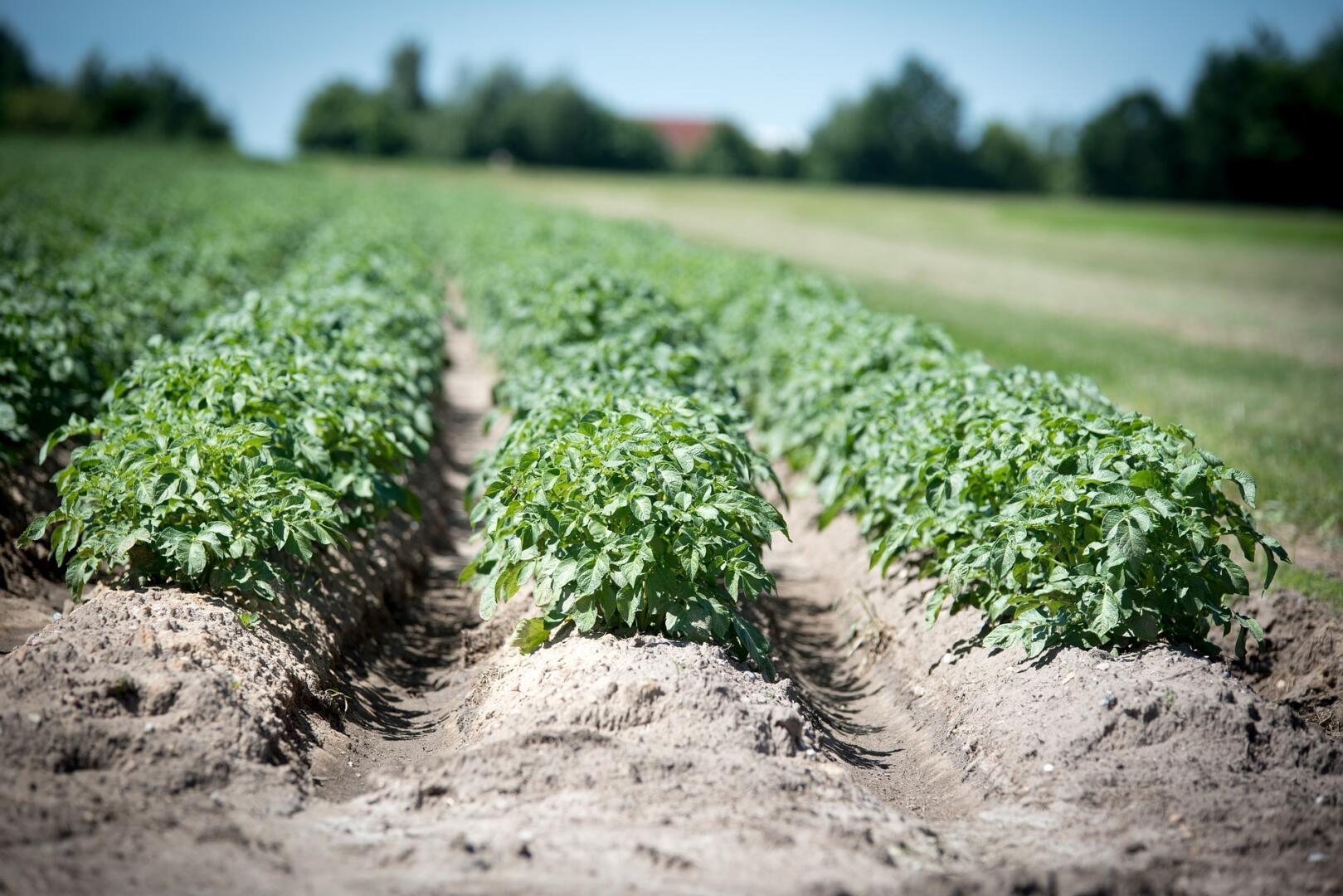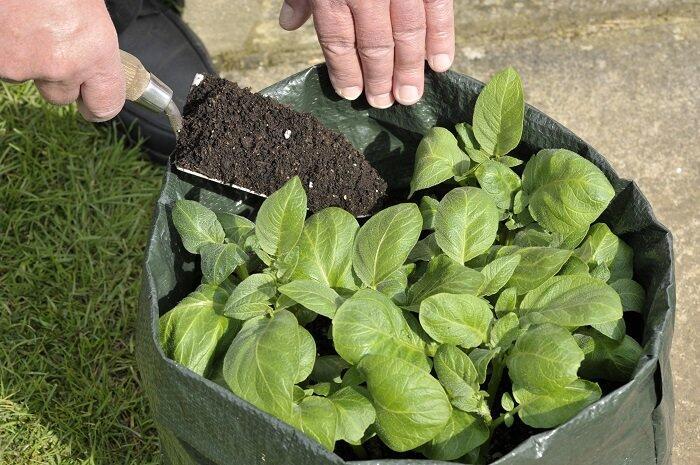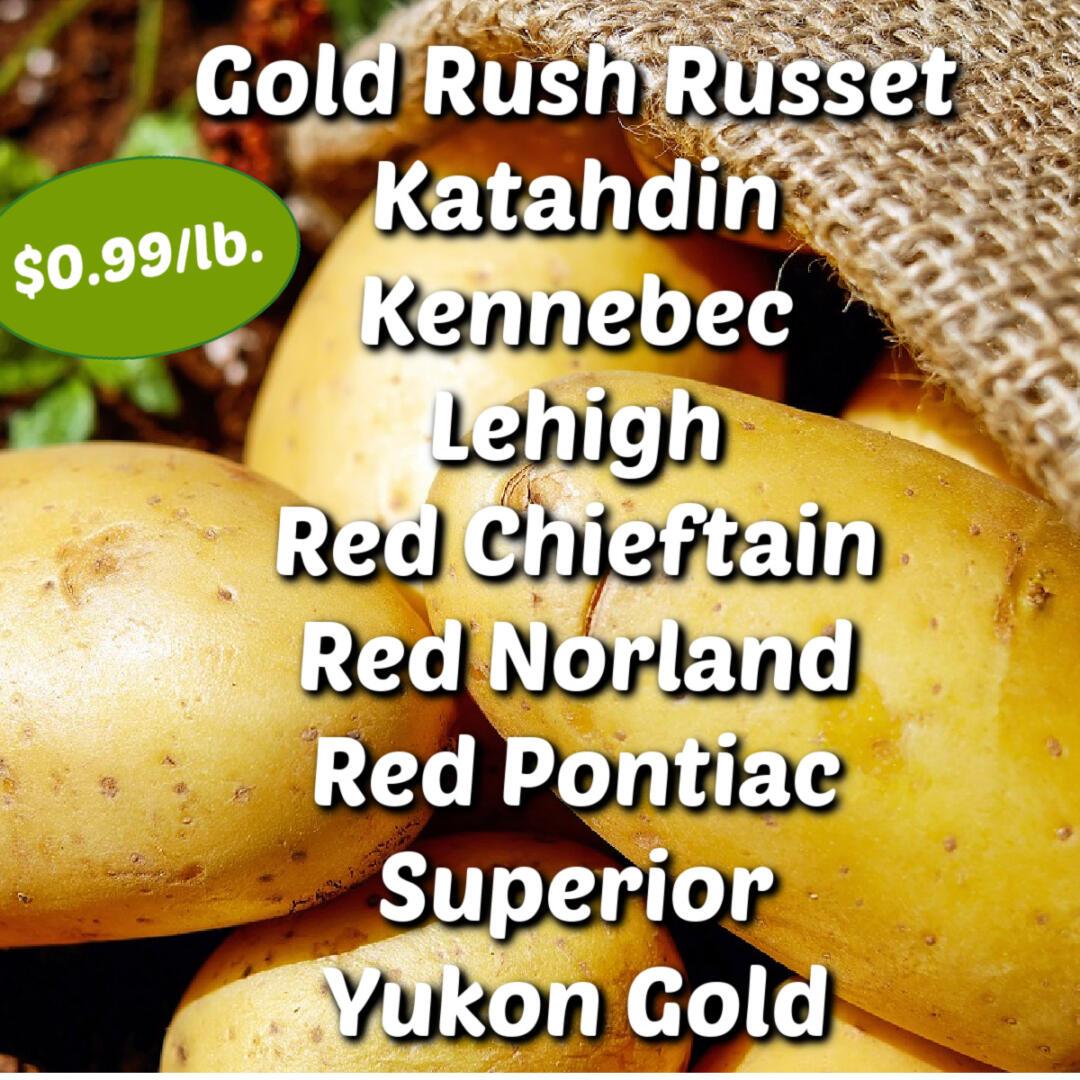Potato Types
Starchy/Floury: High in starch and low in moisture with a dry, fluffy texture. Great for boiling, baking, mashing and French frying. They don’t hold shape well, so not good for potato salads and au gratins.
Waxy: Low starch and high moisture with a creamy, firm, moist flesh. Holds its shape well after cooking. Great for boiling and in soups, casseroles, roasting and potato salads.
All Purpose: Medium starch and moisture content that falls between starchy and waxy. A true multi-purpose potato that can be used for almost any cooking application.
Potato Descriptions
Yukon Gold: A mid-season all-purpose potato. An oval slightly flattened variety with a light-yellow flesh and sweet taste. It has a waxy texture and moist flesh which makes it best for boiling, baking grilling, roasting, pan frying and French frying.
Gold Rush Russet: A mid-season maturing starchy variety. Attractive oblong-to-long tubers with smooth russeted skin and extremely white flesh are especially delicious for baking and fries. It produces high yields and is resistant to drought.
Katahdin: A main season maturing starchy variety with a smooth skin and yellow flesh with a classic potato flavor. Its fluffy, creamy soft texture makes it best for French fries, baking and boiling, but not good for potato salads.
Red Pontiac: A late season, red-skinned, all-purpose potato with very sweet, white flesh. Thin skin makes a great “new” potato. Keeps well. One of the easiest and most adaptable red potatoes there is to grow. Also great for mashing.
Kennebec: A mid-season maturing all-purpose high yielding potato. Its thin skin makes for easy peeling. Your classic chipping variety that also works well for French frying, baking and mashing. Holds its shape, making it ideal for salads.
Lehigh: A less than ten-year-old all-purpose variety named for the Lehigh Valley. It is a mid to late season high yielding potato with a yellow flesh and round shape that won’t fall apart when boiled yet great for baking and fries. A blue-ribbon winner at the fair.
Superior: An early season medium size and yield, all-purpose round, white potato that stores well. Holds shape when boiled yet great for baking, mashing, chipping and fries.
Red Norland: An early maturing red-skinned waxy, round potato with a great taste and various sizes. It is high yielding and stores well. Great for boiling, salads, frying and fries.
Red Chieftain: A mid-season, high yield oblong-to-round, smooth, red-skinned potato with a nice white flesh. Not good for chips or fries. Stores well.




